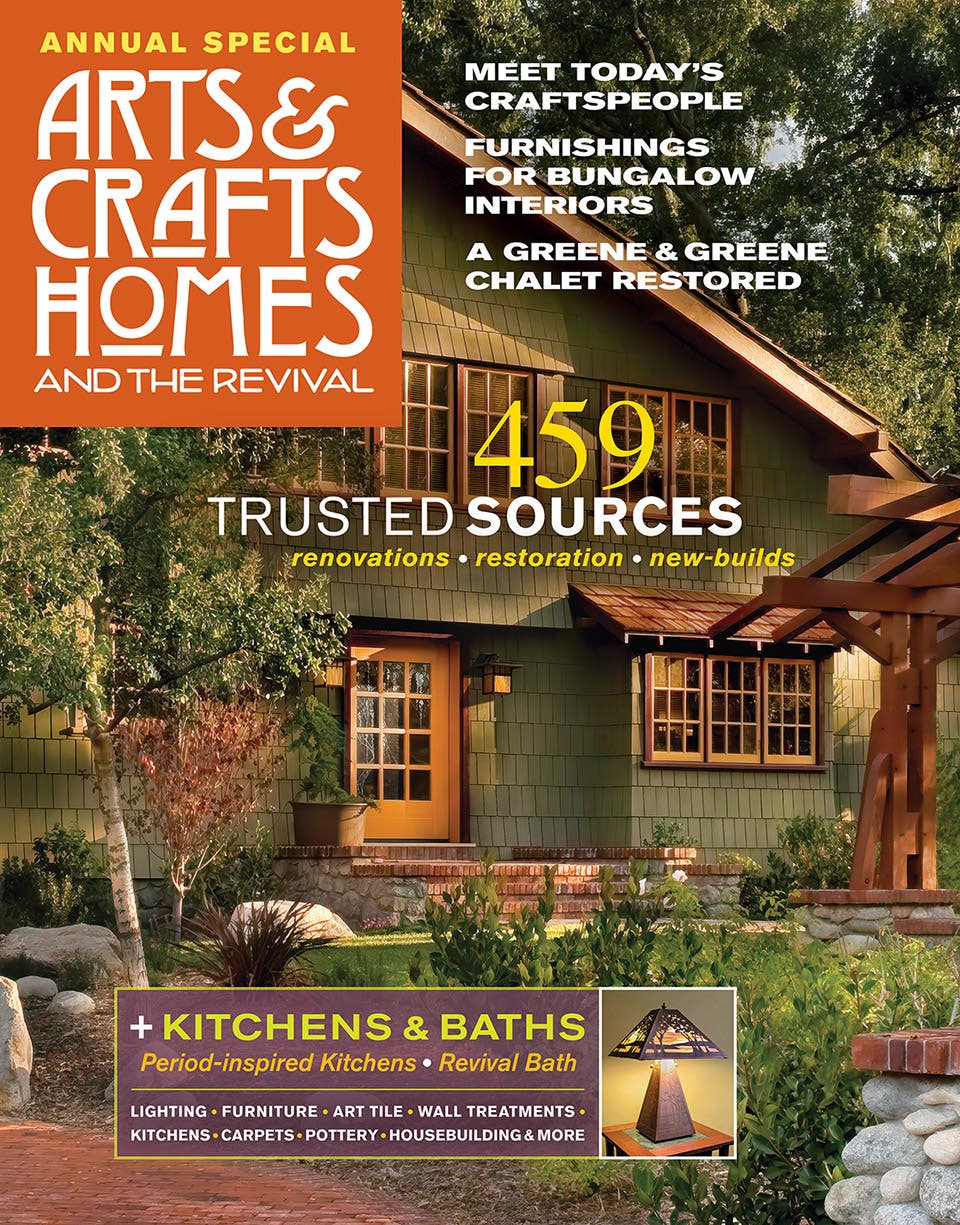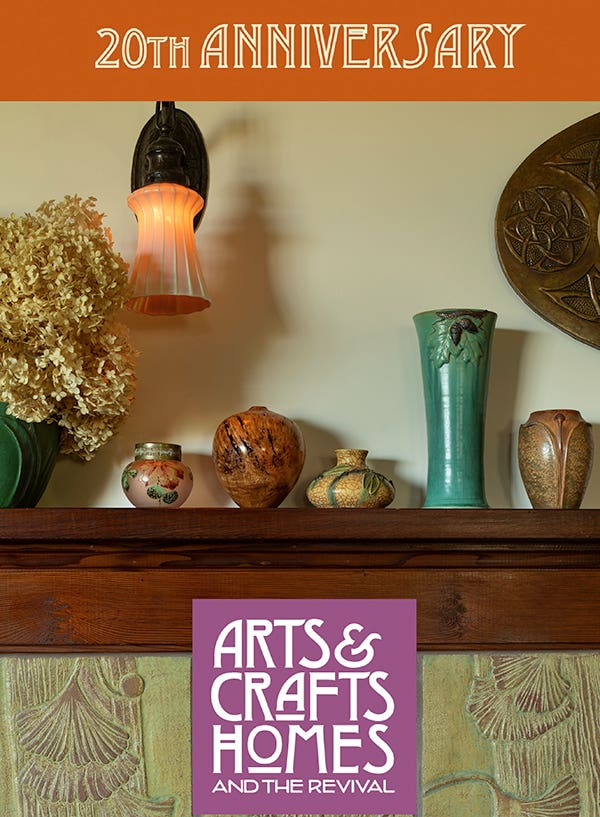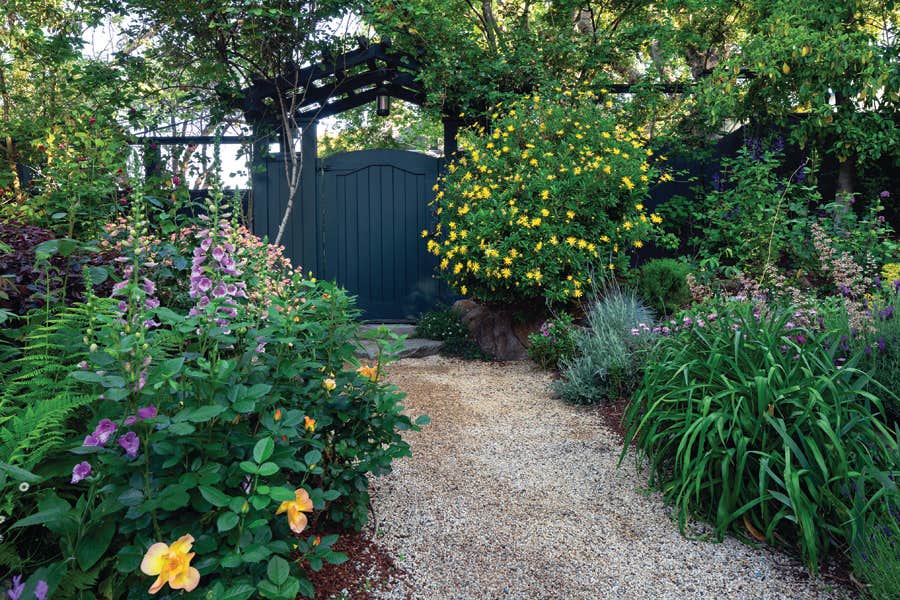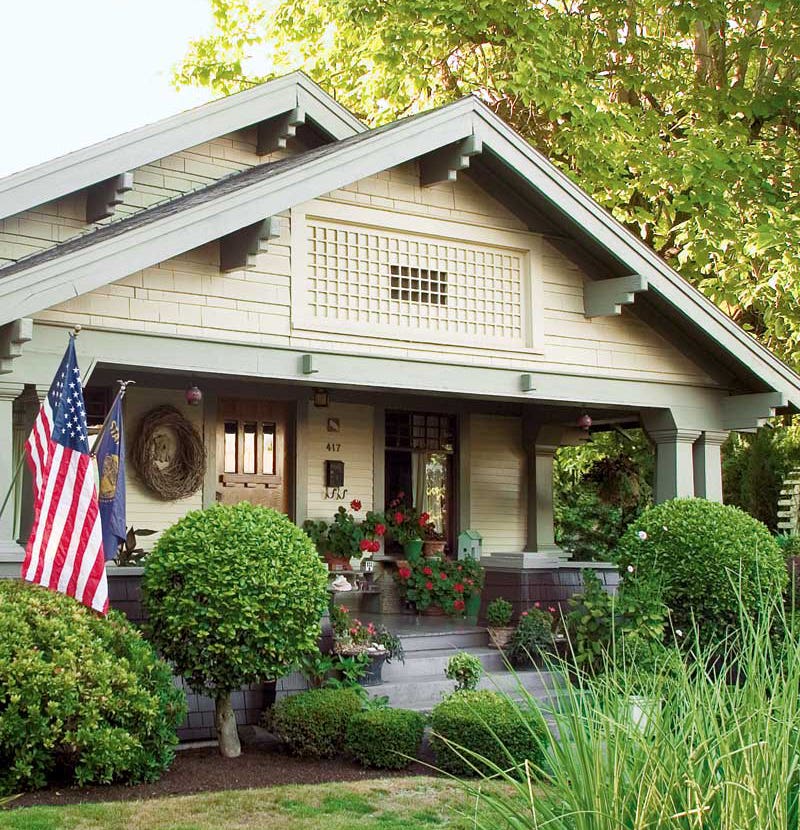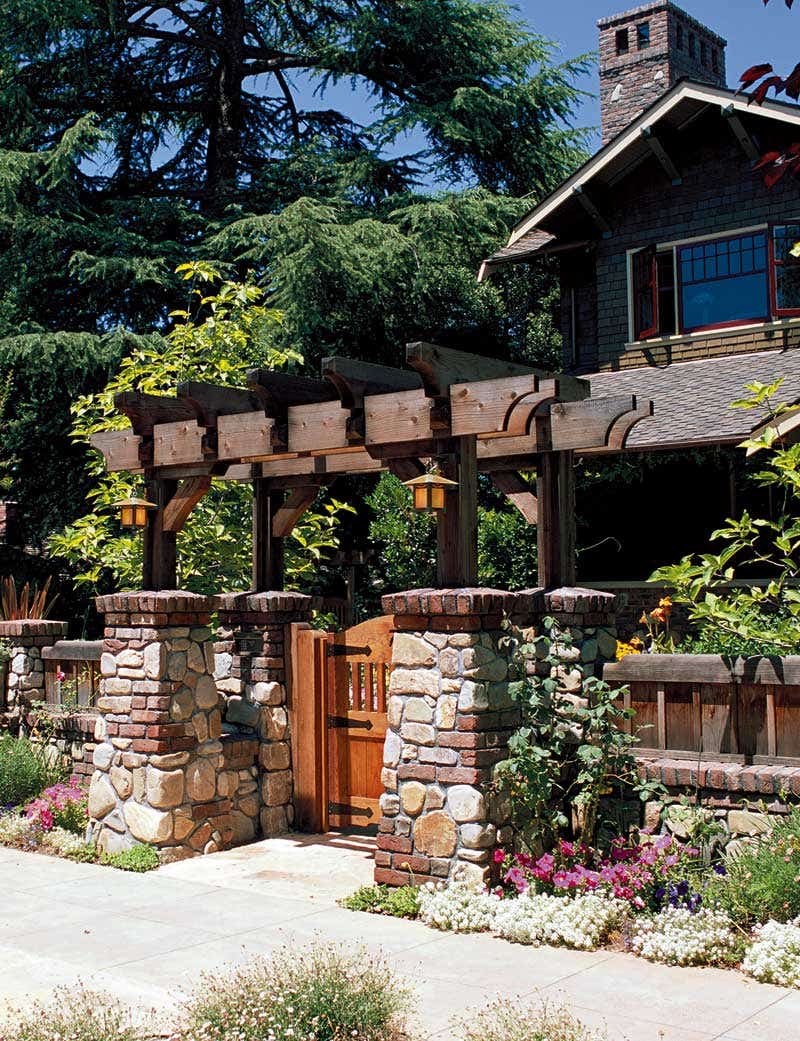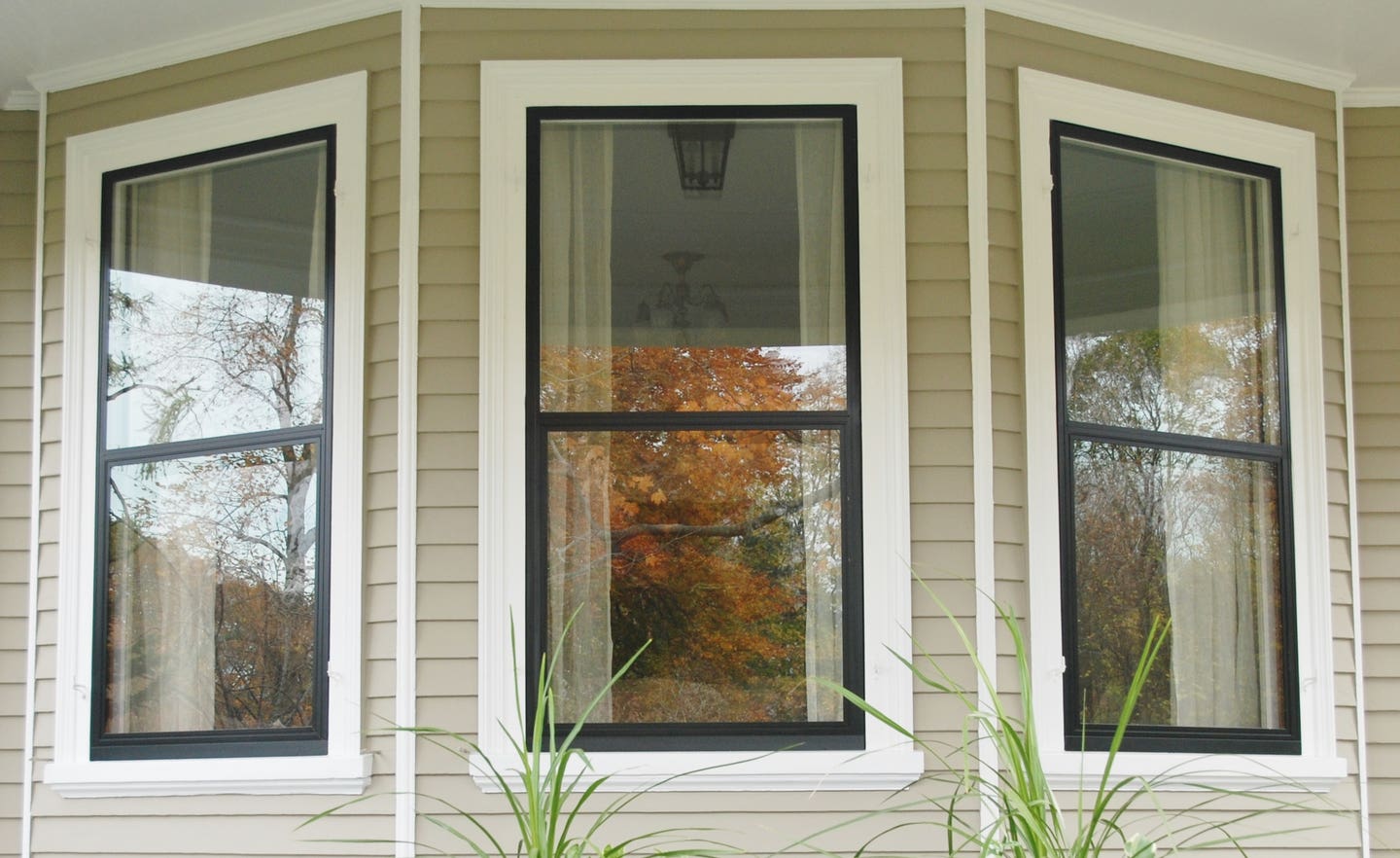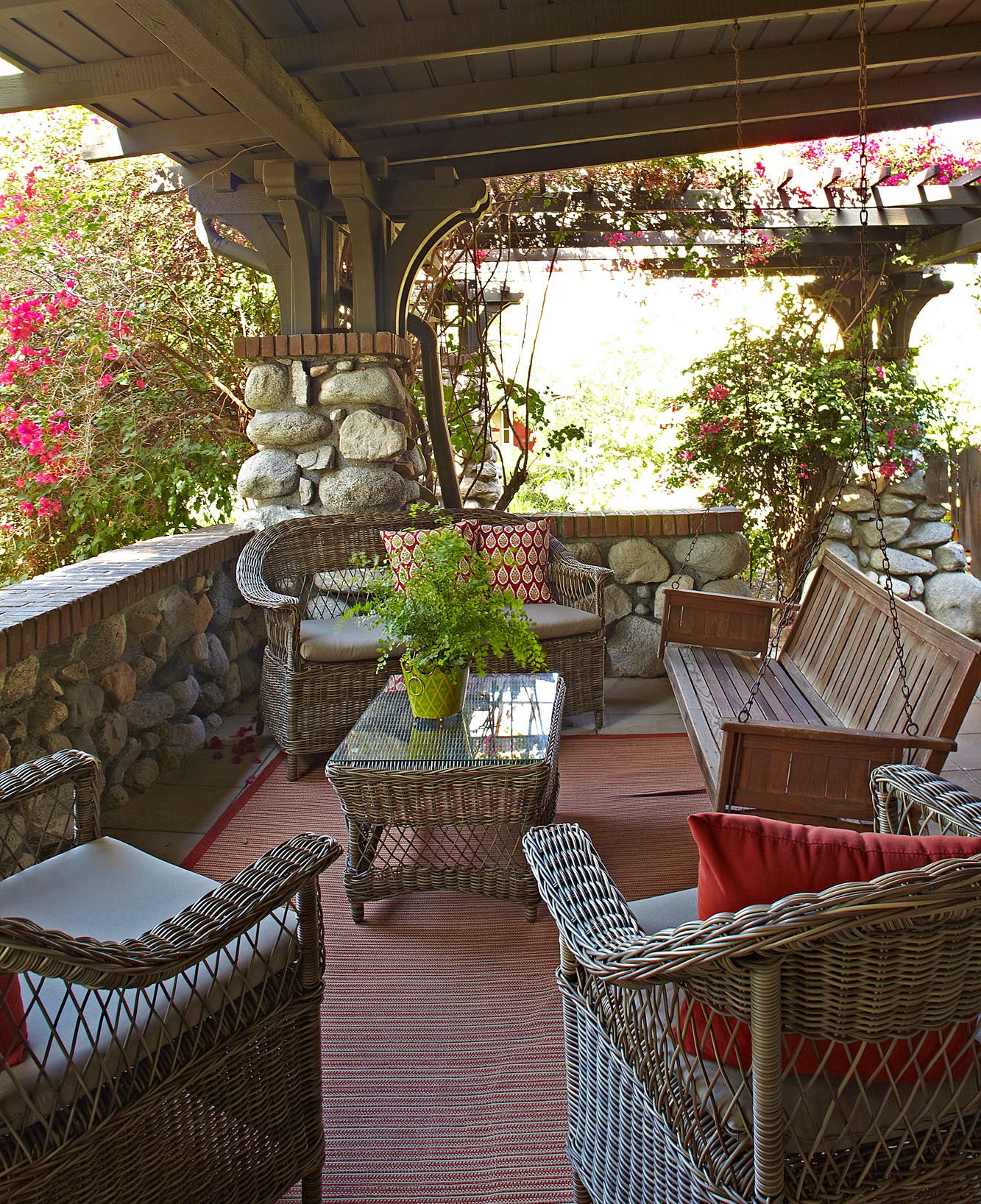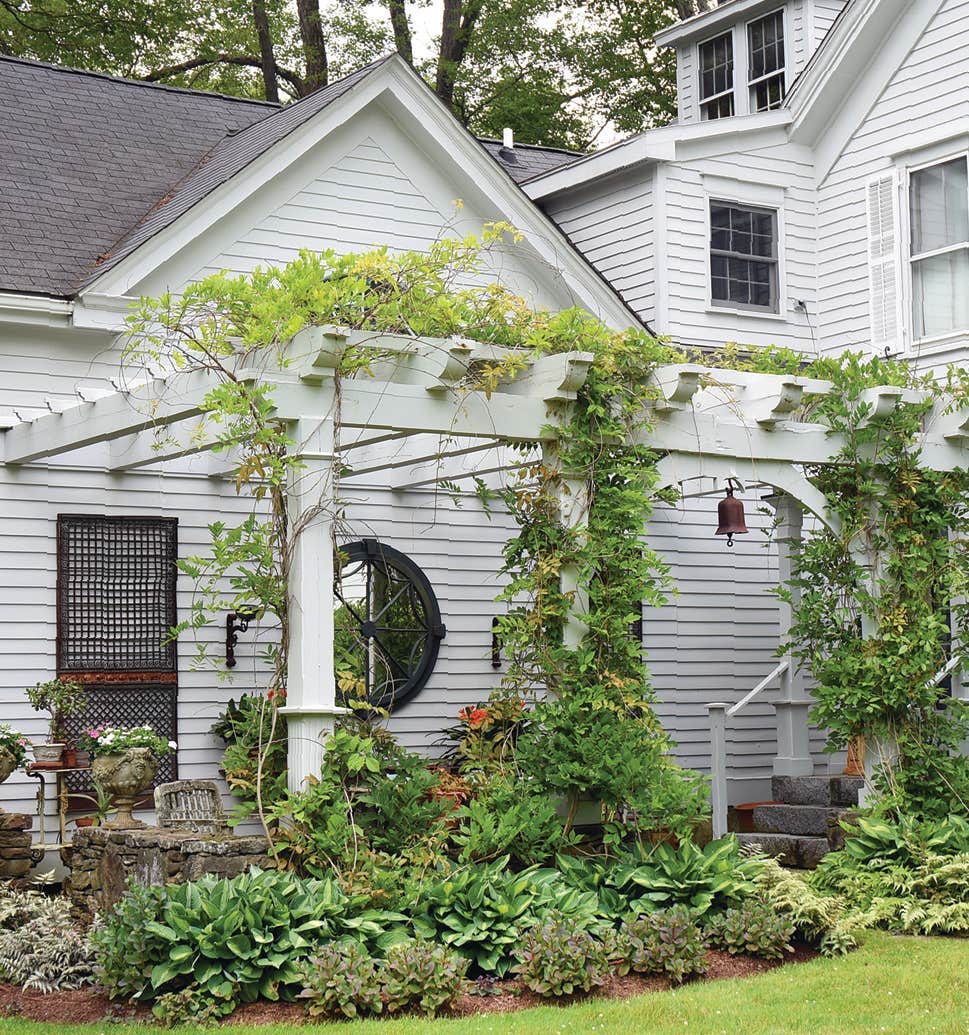Roofing and Siding Ideas
The traditional materials are once again widely available today, as are tradespeople who work with them. Wood shingles, clay tile, slate, metal, quarter-sawn clapboards, cement stucco: these materials telegraph the style, character, and quality of the house.
Traditional Roofing
Red and white cedar shingles are of course the classic material for a bungalow. Look-alikes today include composite shingles made of polymers and fiberglass, as well as metal and concrete shingles. These have an “architectural” or dimensional texture as well as coloring that approaches wood shingles.
Clay tiles are prized for long life. Depending on style, the pieces may overlap or interlock. English (flat) tiles resemble either wood shakes or slate shingles. Concrete shingles appeared during the early 20th century as a substitute for clay tile, wood, or slate shingles. Slate, another material with longevity, was quite popular ca. 1900-1945 for houses in the English styles, like Tudor Revivals and Cotswold cottages.
By the 20th century, metal roofs were usually of galvanized steel, as sheet material or as metal shingles with embossed patterns. Today you can find aluminum and steel roofing with factory-applied coatings that mean you don’t have to paint the roof, as in the old days.
Traditional Siding
Cladding materials varied widely during this period and are not always reliable as a style marker. Craftsman-era houses often follow vernacular tradition, built of brick in Chicago and redwood in California, as examples. Greene & Greene’s Gamble House has board-and-batten siding and Gustav Stickley’s family home in New Jersey is made of logs!
But there are themes. Prairie houses are often stuccoed, as are English cottages and Spanish Revival dwellings. Tudor Revivals are made of brick. Local stone is often combined with clapboard or shingle siding for bungalows from East Coast to West.
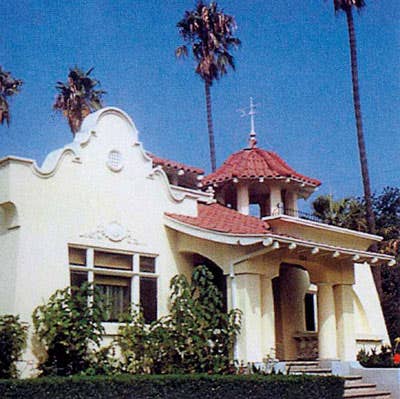
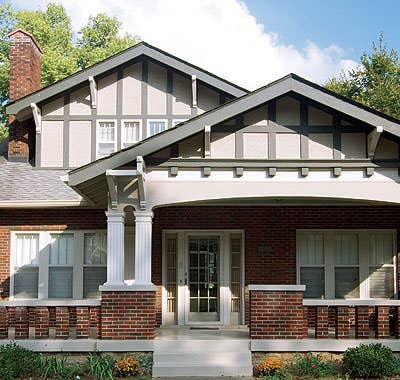
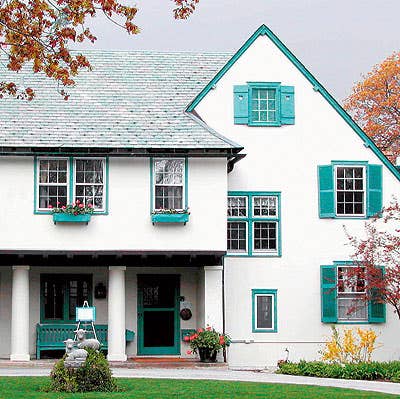
Patricia Poore is Editor-in-chief of Old House Journal and Arts & Crafts Homes, as well as editorial director at Active Interest Media’s Home Group, overseeing New Old House, Traditional Building, and special-interest publications.
Poore joined Old House Journal when it was a Brooklyn-brownstoner newsletter in the late 1970s. She became owner and publisher and, except for the years 2002–2013, has been its editor. Poore founded the magazines Old-House Interiors (1995–2013) and Early Homes (2004–2017); their content is now available online and folded into Old-House Journal’s wider coverage. Poore also created GARBAGE magazine (1989–1994), the first unaffiliated environmental consumer magazine.
Poore has participated, hands-on, in several restorations, including her own homes: a 1911 brownstone in Park Slope, Brooklyn, and a 1904 Tudor–Shingle Style house in Gloucester, Massachusetts, where she brought up her boys and their wonderful dogs.

